Or, a Coggie Ragabash's den. Home of the Werewolf: the Apocalypse Indexing Project. Note that all projects are for legacy WtA, not 5th Edition. She/her.@ivvvihours is my Final Fantasy sideblog! Hi, friends!
Don't wanna be here? Send us removal request.
Photo

Such the the price of loving those of your own kind, of laying with another Garou. The sad plight of the children of such unions is one of being outcast, being seen as lesser for their twisted bodies and the crime of their sinful parents. Some see it a mercy to slay the pup at birth, but it is a hard thing, to look upon your own child and condemn it to death.
Ellie Fawnhide and her newborn.
60 notes
·
View notes
Text
Now Available on Storyteller's Vault: Mundus Artis Soundscapes!
Horror audio for your World of Darkness Tabletops! I am a former broadcast engineer that used to mix audio for radio programs. Now I'm making my horror audio available for everyone's enjoyment! Check out my first release, A Thunderwyrm Approaches!
youtube
#world of darkness#werewolf: the apocalypse#dead mountain#werewolf the apocalypse#world building#werewolves#ttrpg design#ttrpg#ttrpg soundscapes#soundscapes#horror soundscapes#audio engineering#queer radio#Youtube#not wta index
44 notes
·
View notes
Text
youtube
Every day, babyyyy
they told me to “do what i love” but forgot to mention that writing wouldn’t pay rent
#writing#writeblr#writer problems#writing humor#writers on tumblr#writing struggles#writer life#creative writing#writer things#on writing#writerblr#writer struggles#writer woes#writing woes#not wta index#Youtube
828 notes
·
View notes
Text
Werewolf: the Apocalypse 5th Edition and the Anti-Indigeneity in the Gaming Industry
reosted with permission from J.F. Sambrano
Dagot’ee!
Shii J.F. Sambrano gonsēē. My nations are Chiricahua Apache (Ndeh) through my maternal grandmother and Cora Indian (Náayarite) through my maternal grandfather. I am a mixed race Indigenous person, and through my father my heritage is English and Scottish. I am currently residing and doing work in my community on the lands of Lummi Nation. I use both gender non-binary and masculine pronouns, but prefer the former. I have several published works in the TTRPG industry, and am probably most known for my contributions to Mage: the Ascension 20th Edition, Werewolf: the Apocalypse 20th Edition, and the Transformers Roleplaying Game, as well as being part of the Essence 20 development team. Further, I also work in higher education at an Indian college, both advising and teaching Indigenous students across the United States. My passion is education, and I believe that we all learn through play, and that TTRPGs are a valuable source of learning, especially on personal, cultural, and social levels. This has always been what has drawn me to TTRPGs since I started playing M.E.R.P. with my brother in 1996 (and before that HeroQuest), through to my “graduation” into more story-driven games such as those presented in the Storyteller System, until now, where I author and produce my own roleplaying games.
I was also part of the First Team (in-joke intentional) hired by White Wolf Studios/Paradox Interactive via Hunters Entertainment to develop and author Werewolf: the Apocalypse 5th Edition. After several months of work, Paradox Interactive chose to go in another direction in early 2021 (I believe it was either March or April) and in fall of that year, it was announced that Werewolf would instead be taken in house, with Justin Achilli as the Brand Creative Lead and primary author of the book. Going forward I will be describing my experience while I worked with Paradox Interactive, primarily through Karim Muammar, White Wolf’s Brand Editor, as well as the developmental editor for Werewolf. Although I worked in a team, both with hired authors and in-house representatives at Hunters Entertainment, I will not be speaking for the experience of others, except when specifically noting unanimous consensuses, and specific interactions (which will go unnamed) that are particularly relevant. My hope is that by highlighting some of the anti-Indigenous attitudes that are central to the foundational members and leaders of the White Wolf brand, that I can provide opportunities for growth and healing within the World of Darkness TTRPG community, but also in the broader gaming community, where these behaviors and attitudes are rampant. I also want the community to have a better understanding of what this experience is like internally, and the challenges that Indigenous creators, as well as other marginalized creators, are met with when they try to make positive change within nerd and geek communities clinging to inherited white supremacist values, even if they don’t realize they are doing so.
What I do not want to be doing in this article is creating fuel for edition wars. I believe that both legacy and Werewolf 5th are rife with anti-Indigenous attitudes, and appalling amounts of appropriation. Both versions deserve criticism, I am not defending one over the other, I am only sharing what my experience was like working on the 5th edition of the book. Further, please understand that I was originally going to wait until I had read the final copy of the book, because I wanted to know how much of my work was used (based on previews I already know some was, just not the extent) and whether or not they decided to credit me for that work, and how I was going to be credited. My belief is that I likely will not be, but I am genuinely uncertain. Knowing how they handled that would have reframed how I addressed this. But more importantly, I want it to be very clear that even before Paradox ultimately pulled the plug on the Hunters team, I was preparing to exit working on the project based on the experience I will describe below. Not only did I find it frustrating, and personally disparaging, but I ultimately decided I was uncomfortable with my name being attached to the product based on the direction they wanted to go. So while I wanted to know whether or not I would be credited, because it would teach me something about their internal practices, I do not want or need the credit.
Finally, the reason that I decided to speak about this now instead of after having a chance to inspect the final product, was because my personal experience dealing with anti-Indigeneity coming from Paradox was just that: personal. But since then I have witnessed a throughline of hateful and xenophobic attitudes wielded against Indigenous people across the globe, and we do not deserve this treatment. I was outraged over the events that led to the segregation of the Latin American fanbase, which culminated from bottom-up criticism about how poorly their people and countries were being defined through World of Darkness products, and ended up with the firing of their Latin American Brand Ambassador, Alessa Torres, because she chose to stand with her community in those criticisms. I was further appalled when the likeness of Tāme Wairere Iti was shoehorned into the Werewolf book, a blatant example of cultural theft: not only in stealing the literal physical identity of an Indigenous person, but also his sacred tā moko. When Paradox Interactive issued an apology for this, it felt incredibly hollow to me in the wake of these events, the hateful attitudes I had personally witnessed coming from the top.
Whether from North America, Mexico, Brazil, Argentina, or Peru, or across the globe in New Zealand, not only do Indigenous people deserve better treatment from such a major company, but their Indigenous and Latino fanbases, who have twisted and worked themselves through difficult representation for decades at this point, deserve better. Apologies are not enough, especially when they come with next to no real change.
Werewolf: the Apocalypse in Context
At the time that White Wolf Publishing began to produce its World of Darkness line, the TTRPG industry was dominated by white men, both as producers, developers, and authors, as well as the main characters in their settings. White Wolf's World of Darkness made an impact at the time, by defying these Eurocentric, patriarchal presentations, first by defaulting to feminine pronouns throughout Vampire: the Masquerade, and then by focusing on Indigenous representation and values in Werewolf: the Apocalypse, and as a young Indigenous nerd, it had a positive impact on me, as I know it has on some other Indigenous people who became fans of the World of Darkness at the time. This was because before opening the pages of Werewolf: the Apocalypse, I had never seen heroes that I could play who looked like me and my culture. It was off, and often offensive, but it was my first experience in which I could directly play a hero who shared my heritage--and I also had more than one option through two different Tribes to do so. This might sound a little like I was cheering for table scraps, but again, at the time, table scraps was more than I had ever seen before.
Werewolf: the Apocalypse 1st Edition was originally published in 1992 via then White Wolf Publishing (not to be confused with Paradox Interactive's White Wolf). From its inception, the premise was interwoven with what its then-authors believed to be Indigenous praxis and representation. Like many pop-culture presentations of Indigeneity from this time period (see Fern Gully, Dances With Wolves, Disney’s Pocahontas, or in TTRPGs, the NAN from Shadowrun) it was rife with problematic and even offensive stereotyping. The most obvious examples thereof are within the two "Pure Tribes" Uktena, and W****** who I will henceforth refer to as Older and Younger Brother. However, Indigenous inspiration was at the core of the game's spiritual premise as well, where animism and "Totems" are central to the setting and gameplay. The way these concepts are presented is trivializing and dehumanizing, but it is important to acknowledge that the appropriation present in Werewolf: the Apocalypse goes a lot deeper than the two Brother Tribes (even the term "Tribe" was meant to invoke a vision of Indigeneity compared to the previous setting in the line's use of "Clan"). Additionally, there is art throughout every generation of these gaming books that represents humans, wolves, and human-wolf hybrid forms wearing Indigenous regalia, including sacred items such as headdresses, or engaged in sacred rituals such as the Sun Dance. The list of problematic representations goes deep, and my examples only scratch the surface, but it is also important for me to note the positive impact that this had, particularly in the 90's.
Even though the primary contributors to these narratives were non-Indigenous authors, or in one case, a Pretendian, and another, a culturally disconnected author, by the time the Revised (or Third Edition) era of the books came around, White Wolf Publishing was actively engaged in cultural consultation. While I do not believe cultural consultation makes a big difference on its own, it matters that the attempt was made, to a degree: while these efforts fall short of what needs to be seen in cultural representation, this was still ahead of most other gaming companies at this time.
Hired by Hunters Entertainment
In February of 2020 I was approached by one of the co-owners of Hunters Entertainment to be one of the primary authors for Werewolf: 5th Edition due to my work on other World of Darkness projects, and let's be honest, because I was capable of bringing a much needed Indigenous perspective to a gameline that was rooted in Indigeneity and rotting with appropriation and racist stereotypes. I was overall receptive to the invitation, largely because I was very passionate about the World of Darkness setting overall, and Werewolf in particular, due to the impact that 90's representation had on me when I was a younger gamer. I also felt hopeful that with a really hard rewrite of Indigenous aspects of the game that I could shift a lot of really painful aspects of the game into something that was a net positive for Indigenous representation. I will tell you now, more than anything, I was excited to rewrite the Younger Brother Tribe, because when separated from racist authors, their message is very empowering and real to my lived experience.
That said, I did not agree to join the project without first asking for reassurances. I said that I was not willing to write negative Native stereotypes. I would not use appropriative language, or generally engage in appropriative writing (which meant at minimum that the names of the Pure Tribes would need to change), and most importantly, that I would not not engage in writing that contributed to erasure. While the person who recruited me to work on the project was eager to work with me, he acknowledged that he was not sure he could get everything I wanted to see approved, but also promised to fight for everything I suggested as hard as he could. Additionally, he shared with me that the original setting pitch for W5 involved all of Younger Brother being slaughtered en masse in a massacre. I made it clear that this was exactly the kind of thing that I would not write. I cannot remember if this was something he suggested to be changed before or after I was invited onto the project, but with some pushback it was changed. However, I point this out because I want you, the reader, to understand how eager Paradox Interactive was to start with mass genocide and erasure as a foundation to the setting. All that said, I cannot stress enough that I have had nothing but positive experiences with Hunters Entertainment, and none of the following concerns fall upon them.
The Sword of Heimdall
The first encounter the Hunters Entertainment team as a whole had with problematic guidelines for the W5 draft was the direction that Paradox Interactive wanted to go with the Sword of Heimdall. At the time, the suggestions from Paradox and Karim Muammar were that the Sword of Heimdall was going to represent the new major villain of the Werewolf setting, and that they were to also represent the far-right, fascist direction that Werewolf society so often turned toward. They were meant to be representative of how far the new concept of Hauglosk could take entire communities. However, the Sword of Heimdall was discussed interchangeably with the Get of Fenris as a whole, and more than once Muammar seemed to suggest that every member of this Tribe was guilty of the same attitudes espoused in previous editions from the Sword of Heimdall. Now let's not beat around the bush: the Sword of Heimdall are literal Nazis. They believe directly in white supremacy and don't shy from it. They wanted to cleanse impure elements from the Get of Fenris, including BIPOC people, other non-white ethnicities, women, neurodivergent Garou, and other disabled Garou.
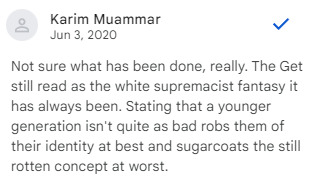
The writing team found this approach problematic for several reasons. The first, and most obvious, was that the direction seemed to want to turn one of the most popular Tribes into a horrific stereotype of its most abhorrent faction. Whether or not Muammar’s goal was to turn them into villains, we could not imagine a world where fans of previous editions would get their hands on this book, and not look for a way to play one of their previous favorite groups, thus creating the issue of making a guide to playing Nazi. Even beyond that, it’s not as if historically there were not players who used the tools of the setting to play Black Spiral Dancers, why wouldn’t this draw people who actually wanted to role-play through these toxic, harmful politics? Further, and while this is less important, it left a bad taste in my mouth, the justification for this major shift in Werewolf lore seemed to change over each pass. At first, Muammar suggested that all Fenrir were Nazis/SoH. Then, when he was provided with evidence that it was a small faction that was eliminated in the early 2000’s, he started to shift toward the idea that we should not follow the lore. Finally, when every single member of the writer’s team flatly refused to provide what would essentially be “a player’s guide to being a Nazi werewolf” the writing was on the wall about the end of our involvement with this product. More than once, he suggested that we were cowardly social justice warriors for being unwilling to work with this concept, even though there were several attempts to write a heroic version of the Fenrir that were focused on undoing these ills of the past.
Indigenous Erasure in Werewolf: 5th Edition
While the entire Hunters Entertainment writing team was handling the major, glaring issue of Paradox’s fervor to include a major Nazi element in Werewolf, I was personally dealing with the problematic approach to the Indigenous issues in the setting. The largest problem, for me, was in addressing Younger Brother’s issues, the history of non-Indigenous writers creating horrifically racist stereotypes, and what was valuable in the Tribal identity that should be saved and recentered. However, my attempts to do so were thwarted with every approach. I rewrote this Tribe four times, and offered three different versions of it to try to earn approval for a final write-up, but each time there was a lot of negativity directed towards my attempts and all them boiled down to this: Muammar felt that having two Tribes (both Younger and Older Brother) representing the “Indigenous population” was too many, and wanted them to only be focused on Older Brother, and that Younger Brother’s connection to a central, Indigenous identity, was undesirable because “other sources wrote them as having Siberian and European connections” and that future writing on this Tribe would require a lot of sensitivity…suggesting that one, Muammar wasn’t interested in doing the work to handle that level of sensitivity, and further, that he wasn’t interested in including me in future work, since I was involved with doing that at the time.

I want to take a moment to remind you that the work that was put into recovering Younger Brother started with “Let’s Kill Them Off” and at this point, through a combination of convincing and pleading, had been walked back to “They can live, but now they’re not connected to being Indigenous anymore” which is just representative genocide of a different variety. “Kill the Indian in him, and save the man.” It was also explicitly something I said I would not write about going into this project. Ultimately, my efforts did not get much further than this, with some specific exceptions I will cite below.
Karim Muammar’s Anti-Indigenous Positions
Muammar consistently and repeatedly communicated to the team in ways that were condescending and dismissive of our collective accomplishments and capabilities, but from my perspective, no one suffered as much significant derision as I did while discussing the changes I wanted to make to Younger and Older Brother in order to make their representation empowering and exciting.
In the pulled quote from the previous paragraph, I want to point out to you that Muammar, who had the title of Lead Editor on this project, refused to capitalize Native American. Further, he would often redline my work with edits to decapitalize my own uses of Native American, as well as the word Indigenous when referring to Indigenous peoples. While there are plenty of people who might want to argue about this, I will point out that both the AP style guide as well as the Chicago style guide (the one which I am most familiar with in my academic historical work) both call for Indigenous to be capitalized when referring to a people. Further, I challenge anyone to defend the consistent decapitalization of Native American. More importantly, the reason that these are standards in respected style guides, is because the English language has been used historically to oppress and erase ethnic identities, including Indigenous identities. By transforming adjectives into proper nouns, we are declaring that Indigenous and Native aren’t descriptors that can be applied to animals, plants, and soil, but real lived identities and culture groups.
When I was explaining to the Paradox team (which was mostly just Muammar) why it was important to change the names of these two Tribes from the appropriative (and offensive) ones used in the past, Muammar pushed back by defending the previously used Younger Brother name, even after reading my extensive research and explanation about how this would harm Indigenous communities and fans.
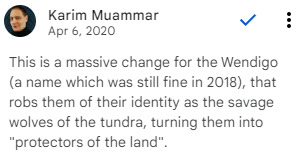
While doing so, he also decided that it was appropriate to refer to this entirely Native American tribe by the word “savages” a slur that has been specifically used to dehumanize Native Americans, and then mocked my rewrite that focused on presenting them as stewards of the land using Indigenous methodologies and praxes, instead of the “savage” racist stereotypes they were presented as in previous editions. Further, as in the above quote, even after it was communicated that the use of this term was problematic, he kept doubling-down to use it to refer to the Tribe.
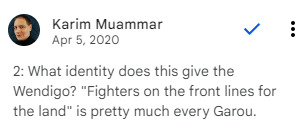
Even though I worked hard to redefine Younger Brother through Indigenous theory, such as place-based theory, relational theory, and communal theory, Muammar either refused to recognize this work, dismissing it as simple, or else simply could not understand the importance of these changes. Either way, the choice is that he didn’t want them to change, or couldn’t comprehend why the change was important because of how entrenched in white supremacist thinking he is. Further, after the massive effort that I put forward to attempt to educate him and the rest of the Paradox team on these issues, the insistence on using offensive terms and belittling my work felt intentional. So let’s talk about the work I did that was above and beyond my job description: free cultural consulting work.
“Sensitivity” and Consultation
I have seen several misunderstandings of my role working on this project going around, so I want to make something very clear. I was hired to work on this project as an author, and nothing else. I was not ever hired to be a cultural consultant. I do not do cultural consulting work. While I feel that there are many creators and companies who hire cultural consultants with the best intentions in mind, their responses often fall short of what is needed, as no one is ever obligated to actually follow the advice of cultural consultants. Further, I think there are also many companies who choose to hire cultural consultants only to say “we did this minimal step, and that is enough” in order to ward off naysayers.
However, anyone who hires me gets some level of cultural consulting for free, because it comes out in my writing–in both what I won’t write and what I choose to center my writing around. In the case of Werewolf 5th Edition, however, it was far more involved than this. I came with a plethora of “I will not write X” because I knew the setting was so problematic. A short list of my demands besides not being willing to write Indigenous erasure, was that we needed to change the names of the Pure Tribes (and the term Pure Tribe itself), we needed to change the word Totem to Patron, and also the Patrons of the Pure Tribes. We needed to move away from the term Metis for obvious reasons, and we needed to move away from the term Skin Dancers. I also specifically noted that there was a lot of cultural theft happening from the beginning of Werewolf until now that I wanted to address. The only way these issues were going to be addressed was to convince Paradox they were actual issues on the level of PR concerns, because nothing else was likely going to be considered. So in order to achieve this, I put in weeks worth of research, writing, and meetings with top level administrators with Hunters Entertainment so that they could bring this information to Paradox. I never documented my hours, but I would guess that I did approximately 80-100 hours of what I could only describe as cultural consultation work for free that was outside the contract work I was hired for. Let’s be clear: I did this willingly because I was passionate about the positive changes I wanted to see in this product, because I believed that Werewolf’s historic ills could be turned toward non-toxic representation.
Besides my actual words, such as naming the Ghost Council, and arguably the name Gale Stalkers came from a combination of names I pitched to Paradox after Winter’s Teeth was denied, and several sentences and paragraphs that I have seen so far that appear so close to what I originally wrote that you could imagine they were just edited versions, my largest contribution toward the final version of Werewolf: 5th Edition was this work. The only reason the offensive, appropriated names were changed were because of hours of my work to convince them it needed to happen. The reason that the Gale Stalkers aren’t just dead and gone: again, I pushed against this. The reason that Skin Dancers, Totem, and Metis will not appear as canonical titles? I pushed against their unwillingness to alter these things (see Karim’s defense of Wen**** Tribe name above).
Further, and this is the biggest reason I decided to write this article before seeing the final version of the book, I want to mention that I was also included in discussions with Hunters Entertainment to potentially be part of the art direction team, especially to oversee depictions of Indigenous characters, regalia, and art, to ensure that it would be represented either respectfully or not at all. I decided I needed to speak as soon as possible after the artistic portrayal of Tāme Iti appeared in the Glass Walkers preview without his permission. There are many arguments surrounding this issue and I am not going to address everything, but ultimately, I can tell you that had I remained as part of the art direction team, and saw that, I would have questioned it immediately. Even if I didn’t recognize Tāme Iti immediately, I would have asked what the source was on the depiction of moko in that piece, because I am aware that this is a sacred form of art–and I had already discussed wanting to make sure things like Crinos in headdresses didn’t appear in the book (as had often happened in previous editions, particularly on a certain white-skinned character whose name rhymes with Steals-the-Past).
As time working on this project went on, and I went through rounds and rounds of trying to convince Muammar and Paradox that it was important to not steal Indigenous identities, art, and stories, and that a greater effort needed to be put in powerful and empowering Indigenous representation, and I constantly ran into refusals and criticisms that were clearly hateful toward Indigenous identities and peoples, not to mention the push to represent Nazism as a major part of the game setting, I grew increasingly frustrated and restless with feeling like I was trying to work on a challenging project while also defending my right to exist as the person I am at every turn. Eventually I turned to another Indigenous TTRPG and game creator to ask for advice, and after a long and difficult discussion, I came to the conclusion that I was going to talk to the Hunters administration team and tell them that if Muammar kept using slurs and other anti-Indigenous language and attitudes, I was going to need to step off of this project, because it was harmful to me on a personal level. In furtherance of this point, I have been avoiding doing any contract work at all where I can tell that I am wanted for my specific cultural perspective ever since, because this situation was so harrowing for me.
Unfortunately, before I could have this conversation, after one final draft of Younger Brother and Bone Gnawers (which had its own issues, but that is not the point of this discussion), before we received any other specific feedback, the Hunters Entertainment administrators announced to the writing team that Paradox had decided to take the book in-house, and would no longer need our services.
The main point I would like to leave you with, besides these few specific quotes (out of dozens and dozens) that Muammar made that were anti-Indigenous, is that there is often a big call to have more BIPOC voices in various entertainment industries, so that both our stories, perspectives, and unique views on how the universe and life works, can be included; so that an industry that is historically, harmfully Eurocentric, might turn toward new, healthier, and inclusive directions. And I agree with this call for change, but I implore you to consider the conditions that BIPOC creators often have to work under: doing cultural/identity work and consultation for free as part of being present, being subject to vicious refusals of our experiences and perspectives, and straight-up having slurs lodged against our work. I want to see these changes in the industries we love, including the gaming industry, but currently the people who are in charge, who have the most power, are severely hostile to our work and our perspectives. This is why, for example, works like Coyote & Crow were done with an almost entirely Indigenous group of creators, and led by Indigenous creators, because trying to work for and with this ugly, hateful, and xenophobic group of people is so often exhausting, both mentally and spiritually, and because no good changes end up being made.
I am glad the harmful, appropriative terms were removed from the setting. I am glad I was part of the fight to make that real. I am not so glad that I was treated with hostility and racism by Muammar for the effort and love I put into this work, and I am not so glad that I will certainly be reviled by one of the two communities I did this work for–the gaming community, and certainly the people in power in this industry–and I am also not so glad that I didn’t have the opportunity to properly acknowledge how much of Werewolf’s base themes and setting are twisted and tied-up in Indigenous appropriation without giving the proper acknowledgments.
More than anything, I hope that this story will help you, the fans, realize that there is a lot of darkness in these communities, and they won’t change unless you hold their feet to the fire.
Ánaagodzįįhł
J.F. Sambrano
#decolonization#ttrpg#world of darkness#werewolf: the apocalypse#werewolf the apocalypse#not wta index
3K notes
·
View notes
Text
The... the silly....

105 notes
·
View notes
Text
Werewolf The Apocalypse Tribe Playlists, Part 1
So because I'm mega autistic about this game and because I listen to music while I work, I've been slowly compiling a series of playlists for each of the tribes. :) I've got enough done to post a few of the playlists, now! These are all Spotify Links. When I have the time, I want to do full album cover style pictures for each one. Silver Fangs
Children of Gaia Shadow Lords Red Talons ( my personal favorite is the Red Talons list, and it's the one that started the project) Bone Gnawers
#hey don't mind me i'm just going through my like backlog#queuing everything up#werewolf the apocalypse#bone gnawers#silver fangs#children of gaia#shadow lords#red talons#world of darkness#werewolf: the apocalypse#not wta index
22 notes
·
View notes
Photo
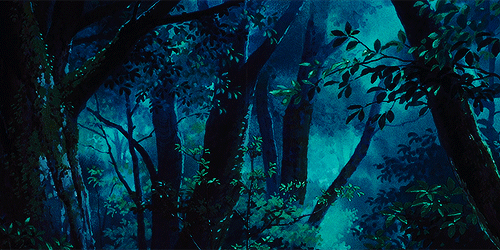
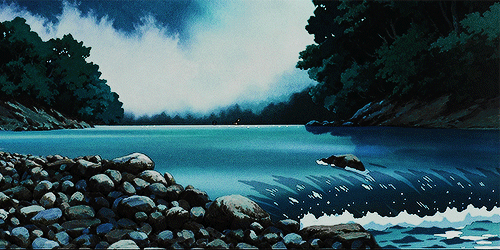
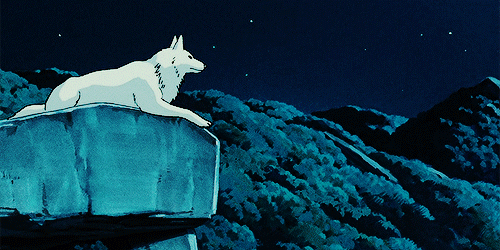
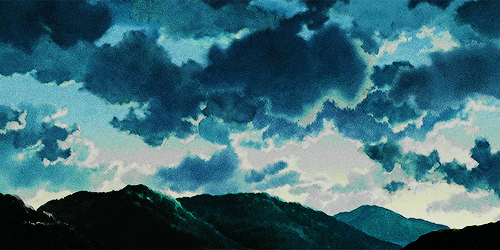
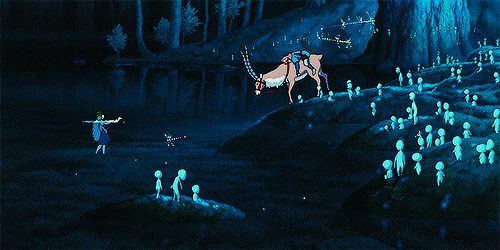
PRINCESS MONONOKE 1997 | dir. Hayao Miyazaki
11K notes
·
View notes
Text
the new game changer absolutely slaps but i will say as someone who saw the voicemail: the musical live, i'm so sad they cut the part where you find out that the reason daddy is elsewhere is because he's a werewolf
14K notes
·
View notes
Text
On Places
Like people, places can be harmed by the events that transpire around and to them. Both physically, and, in their own way, mentally. The mind of a location is much different than the mind of a mortal like us or even a being such as a spirit, but these places seem to know what occurs on their soil all the same.
Physical harm is obvious, just as it is on the flesh. Deeps scores in the earth, burnt trees, shattered buildings; these are all clear signs that something terrible has transpired here, to this place. These are the easiest evils to fight and wounds to mend. It is easy to plant a new tree or rebuild a building, and while it is difficult to purge toxins from the soil and water, it can be done and is easily diagnosed. Those tainted places that are this way because of some physical event are the easiest for us to see and cleanse, the same way a healer will identify a cut and wash it clean before dressing it.
And humans can help with this, as well. For while some humans are wicked, evil things, most of them are simply unaware of what goes on around them and are capable of much good, if they are taught. Many Garou fail to see the use that even a few pairs of human hands can be in returning parts of the Mother to a pure state.
It is this mental injury that is the hardest. Places do not think the way people do, their memory is long and slow and not easy to see. While you can speak to an injuried human or even an animal or spirit, the voice of a place is a task to draw out, requiring just the right set of circumstances that are all too often denied of those who would help. Finding out what has happened to a place can be harder than healing that wound.
Often, those who witnessed the event are long dead, or unable to be found. People die or forget, but the soil remembers. Places like this and linger, and fester, and fall to the taint of the Destroyer as pits and hellholes. These are places too wounded to recover, or left without help too long, or who's secrets were kept by unkind beings. Facilities where many people or animals died in horrible ways or the secret ravine the locals dump their garbage for years and years. Sites of tragedies and massacres. All these places become tainted through not what was done to them physical but what has happened on their soil. Even humans can sense this, to some extent. Not as well as those with the changing gift can, but it is there. The way humans avoid places that tragedy has occurred, the way a silent melancholy clings to them while they are there.
I once spoke to a small and rural sept, who told me of a nearby coal mine that had become one of these sorts of places. Many people were worked to the bone for company scrip and empty promises there, forced to labour in unsafe conditions for the benefit of their masters in cities far away. Many men and beasts died a mile underground in the dark, or in bright hospital beds after the coal came home with them in their bodies, and neither left the mine, not really. And those dark and empty tunnels still remember. The dark soil remembers every set of boots that came marching down into the depths never to return, or who left into the sunlight and never worked again. And it was angry.
I never got to see this place in person, but I'm not sure I would have wanted to. When the earth cries in pain and anger, it gives birth to dark things that have no kind words for us. I left them to watch their burden, and walked on, wondering what exactly was slumbering under my feet.
12 notes
·
View notes
Text

Found a folder on my drive called "in case of emergency" was totally ready for it to be some mentally ill thing i did years ago or whatever but i opened it up and it was the full 1993 Live Action Super Mario Brothers Movie
#not werewolf#off topic#i don't know how this hit my dash but it spoke to me#i long for this on my wall someday
15K notes
·
View notes
Text
More than just *a* song. They call it a demo album these days (presumably to spare themselves and/or their fans some embarrassment), but the 1996 "Mate. Feed. Kill. Repeat." is just overall a Werewolf: The Apocalypse inspired album with literal, lyrical references to terms specific to the game. The werewolf was always there; certainly makes their name hilarious in hindsight.
slipknot sounds like werewolf lube
84K notes
·
View notes
Text
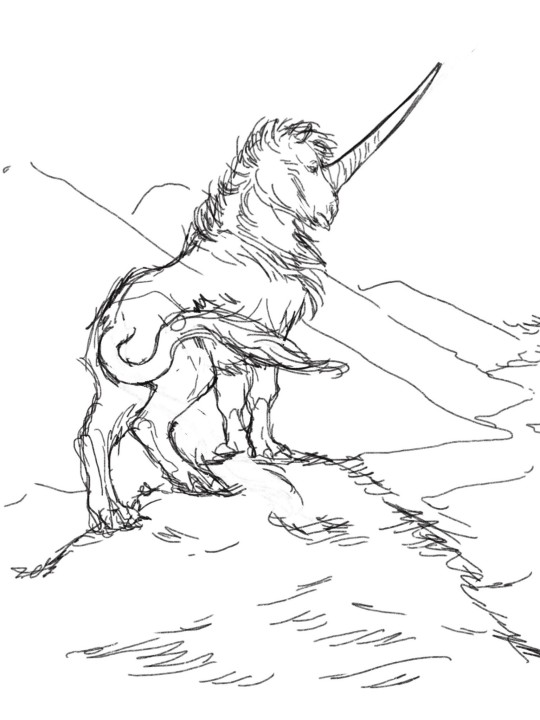
Somewhere else
172 notes
·
View notes
Text
Hey Kinfolks,
I was invited by Kiegan from A Bunch of Gamers and Lore By Night to discuss politics at the tabletop! We discuss games with heavy political themes, representing modern politics at the tabletop, postwar societies, and using the tabletop as a Third Space for building Community with your players. Cheers!
youtube
#world of darkness#Tabletop gaming#ttrpg#werewolftheessentials#werewolf the essentials#werewolftheapocalypse#werewolf the apocalypse
19 notes
·
View notes
Text
Please enjoy this comic, everyone - phenomenal work went into it and I feel it really captures the feel of the second edition corebook's intro comic while still being something entirely new!
Cracking the Bone
This comic was created to introduce people to the pathos of Werewolf: the Apocalypse so as to introduce the upcoming reference guide for it: Werewolf: the Essentials. A team of dedicated fans and scholars on the setting have amalgamated all the best of WtA into an easy to parse format, coming to Storytellers Vault this November 30th! At long last, all the deep lore on Garou Society and the denizens of the tellurian are coming together into a single series of references that span the entirety of their lore, condensing thousands of pages into a single series.
Enjoy, and don't forget to share with your friends and follow this account and @werewolfessentials to stay up to date on news!
A very special thank you to @mekanikaltrifle for illustrating the comic, and to @wolfgirlbites @excelgarou @redratt @balthazarslostlibrary and @bekandrew for their contributions to writing this!
Trigger warnings in the tags






















328 notes
·
View notes
Text

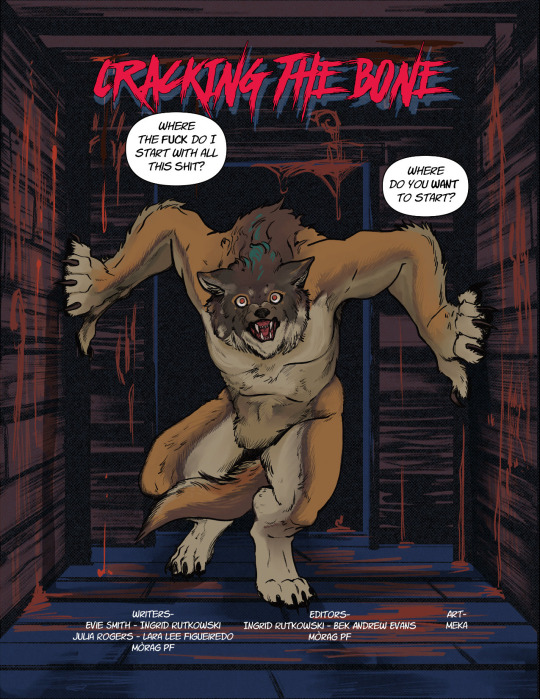
Happy Halloween!
As a November treat, we're going to be releasing pages of the Werewolf: the Essentials comic Cracking the Bone every day! Look out for our book release on Storyteller's Vault, coming November 30th! Writers: Me, @wolfgirlbites @excelgarou @balthazarslostlibrary
Art: @mekanikaltrifle
Proofreading: Me, @balthazarslostlibrary @bekandrew
Enjoy!
1/22
#werewolftheapocalypse#werewolf: the apocalypse#werewolf the apocalypse#wta#werewolf the essentials#werewolftheessentials
215 notes
·
View notes
Text
W5: Oral histories are bad
For an edition focusing on being more aware of different cultures, W5 sure does spend a lot of time hating on oral histories; NOTE: LONG post and critical of W5, don't read if you like it.
"A history of the Garou is both impossible and reductive. The stories of the past that werewolves tell are oral histories, part legend and part reality, revised, reinterpreted, and redone, according to the needs of the generation doing the telling. They contain multiple narratives that are all considered to be true. The finer details, locations, and players in these grand dramas may shift with the times, and with the storytellers spinning the tale for those listening to them. " - W5 core, p.22 "The Garou Nation, as it was known, existed for a brief period of relative success, but even there, its actual duration is unknown and varies by who’s reciting the history. Was it decades? Centuries? Millennia? Because the historical events involved in it date to various times across myriad locations, to say with any certainty is impossible, and even spirits speak of it in terms unsuited to the physical world. " -W5 core, p.37 "Much of the Garou’s history is oral, more within the realm of legend and even self-mythology than a true history. Given the animistic perspective of Garou, when one says, “the mighty Silver Fang rode upon Falcon’s back,” that might literally mean a werewolf rode an enormous falcon in a legendary time, or it may mean that a falcon-spirit carried the werewolf, or even that Falcon himself transported the werewolf through the Umbra.
So it goes with the Litany, a code of Garou custom that’s equally as impressionistic and open to interpretation as the animistic lens through which werewolves see the world." -W5 core,p.46 "The Litany is an imperfect set of rules by which to wage a guerilla war of resistance during an ongoing Apocalypse. Those rules mean different things at different times to different werewolves, and the oral tradition of the Garou is rife with the Litany being used to justify self-dealing or even atrocity. " -W5 core, p.47 "Above and beyond the tribes and the septs, there used to be something called the Garou Nation. It was understood that all Garou were united in their war against the forces of the Wyrm.
Some dispute whether this was ever really true. Were the Garou of old really united in a global nation in the mythical prehistory of Garou legend at a time when humans had barely managed to get from one continent to another" -Shattered Nation, p.37
"The Garou are creatures of the present, their traditions built on oral storytelling. This means that factual accuracy is often not considered particularly important as long as the broad outlines fit what the crowd at the moot wants to hear. The stories of Garou from the '80s and '90s are already ancient history, having happened before most Garou today were even born.
Garou legends are notoriously difficult to date accurately. When was the War of Rage or the Impergium? In the Middle Ages? In the Stone Age? Who knows, and the spirits are no help either. Their sense of time is so different that it’s impossible to translate into human reckoning."
-Shattered Nation, p.40
I apologize for the paste spam, but I wanted to show you that this is not a one-time thing. This is constant. This is not that the books are saying that the garou specifically are bad at keeping histories straight, it is saying that with oral storytelling, it is impossible to tell when things happened. Which doesn't pass the smell test even if we focus solely on Europe. People have, for generations, kept information up through oral histories. Minor things might change, but the core details are there.
Think about it, how many of your family histories are written down? Most likely they are told orally a put into memory. And the time these events happened is usually a big part of it. Those of you with immigrant backgrounds will know why your family left, what kind of journey it was and when they arrived. It gets even less acceptable once we get to Indigenous people. Australian Blaks are very strict about accuracy and so there is no drift in stories over the centuries. Most Native American nations told their histories orally, maybe using metaphor but still recalling exact details over the centuries. W5 says that garou don't know when the Garou Nation existed. Given the former silver fang king is alive, it is clear it was within living memory. Yet the book still paints the garou as ignorant of their own history, the origins of their laws and so on. What is worse, is that this is often contrasted with written history being accurate. Essentially implying that the correct history is only found in books. A VERY Western European take if I ever heard one. Let's remember that, according to W5, any tribe can be found anywhere. So those garou found in mostly oral cultures just failed to record their own history? Writing like this, in a work with heavy animistic inspirations from Native American cultures and other animistic cultures, is insulting because it suggests only the western method is accurate.
30 notes
·
View notes
Text

Project Update 09/01/24
Hello, Kinfolks. We're a little under 60 days from releasing Book 1: Cliath, and I wanted to give you all a quick update, provide a few book facts, and hope this lets you share the excitement the rest of us have been feeling!
Book Layout
As you might've seen from our previews, writing is transitioning from writing to copy editing and book layout! If you haven't yet, check it out! The first two chapters are done, and chapter 3 is well underway. Outside of my work on Hearthbound, this is my first major book project, the largest book I've written, and the insights I've gained are ones I think might help future community content partners publishing work on Storyteller's Vault.
On Bluesky, a few months ago, I commented that you should "plan to take as much time doing layout as you do for writing." Even if one writes the book inline right in the desktop publishing program, annotation will still add time. With a WtE book we want to not just provide an adventure and a crash course on the Tellurian, but to also be a roadmap for Storytellers, new and old alike. This has happened on three fronts. The first and most important is we're taking the time to properly index everything in a way that'll let you look up specific book information quickly. The second is how we streamline information through the liberal use of cross-referencing in footnotes. In early chapters, you read truncated summarization, and in the footnotes, you can find book sections that expand on the information you're looking for and let you tune out the things that may not be so important for you to know at the moment. The third and most important feature, however, is where able, we cite our sources for our information. Should a Storyteller wish to learn expanded information on topics, they have a direct book and page citation where they can find deep lore to help construct their chronicles.
Cracking the Bone: now in coloring flats stage
For those that haven't been following, we are returning to old form. The moment you open Book 1, you'll be greeted with a fully illustrated and colored 22-page comic book showcasing life in the Age of Heroes. This story is centered around Dante (he/they,) our protagonist, and his first steps towards his First Change as a Bitten Homid Philodox. Throughout the book, we'll follow his journey towards becoming a Cliath, forming his pack under Earwig and his first mission as a Zedakh in a pack of other Queer Garou. In successive books, you'll see him transition from a scared baby gay Cub to a respected Elder in the Eastern Concordat! We're all absolutely thrilled to follow them on their journey. Illustrating this comic is the highly talented @mekanikaltrifle, who has partnered with us to bring Dante's story to life. I have a single pane I'd like to show you, bearing in mind these are just a first pass!
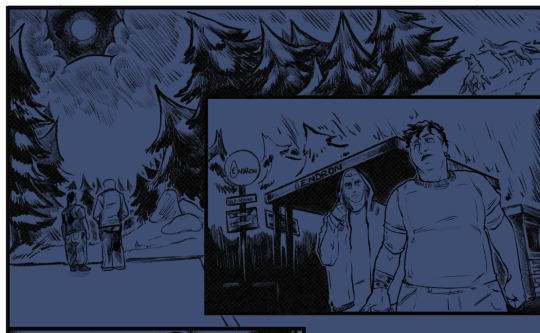
Book Pricing Information
We've also finalized some of our possible pricing on this book. On Storyteller's Vault, Community Content is priced on a per-page basis. The average is considered to be 12 cents per page. I did some early market work by releasing Hearthbound on a pay-what-you-want model with a recommended pricing of $2.99, totaling roughly 8 cents per page. I advertised exclusively here and on other social media platforms to queer audiences to help gauge a fair price for materials explicitly marketed to that audience. Of those that decided to pay for copies of the book, readers paid an average of 5$ per copy for an average of 14 cents per page. Given the voluntary nature of the release, we on the team have agreed that we'll be charging a rate of 14 cents per page for this release, which puts us on par with pricing for similar releases with a matching pagecount. With layout underway, we're currently looking at a book length of around 200-250 pages. 50% of proceeds go to the publisher, and the remainder will be split equally among all contributors, myself included. I and another artist have pledged to donate the entirety of our shares toward preserving the Kalapuyan language.
Book 1: Cliath releases on Halloween day!
I'd like to give a shout out to @a-boros-named-seamus, @madamebadger, The Bohemian, @peltofash, @ar2456, and Durodragon for supporting me on ko-fi, through yours and the donations of other ko-fi sponsors, we've managed to hire cultural consultants to review about half of what's been written. Because we weren't able to review all of our written words, we've narrowed our focus onto some of our most sensitive subject-matter, and believe that what we have coming out will be the inclusive Werewolf: the Apocalypse Quickstart you've all been waiting for. Thank you! It means so much to us that we have our own sept of Kinfolk out there who believe in this project!
If you'd like to help sponsor this project, subscribe on ko-fi to help us pay Cultural Consultants to work with us! We have some cool perks for subscribing, including access to book and setting previews, the ability to give feedback on game content we're producing, personalized advice for your own tables, and can even get a shoutout right in the book.
#werewolf: the apocalypse#werewolf the apocalypse#world of darkness#wta#werewolf the essentials#werewolftheapocalypse
141 notes
·
View notes